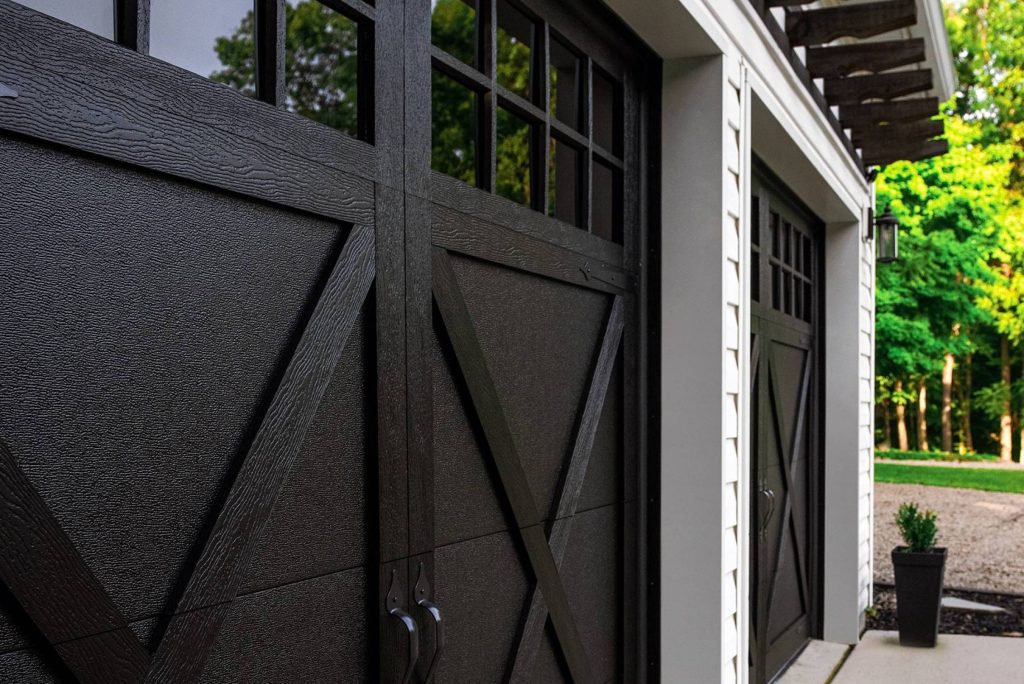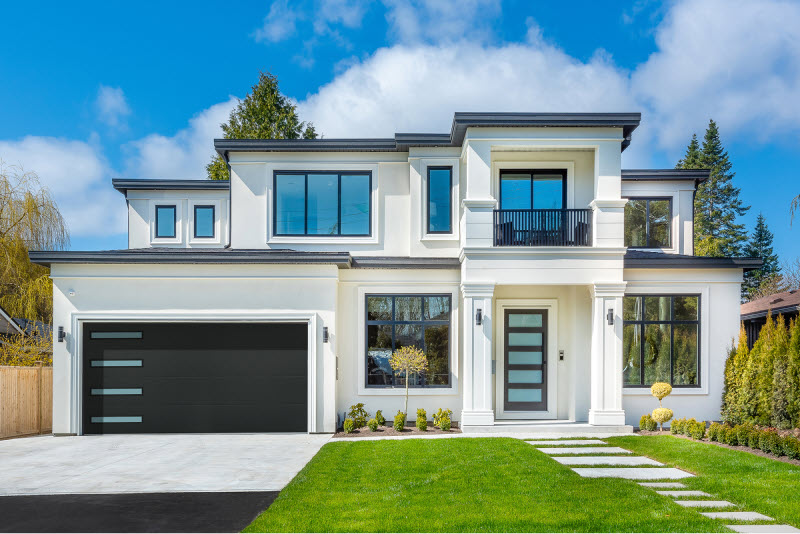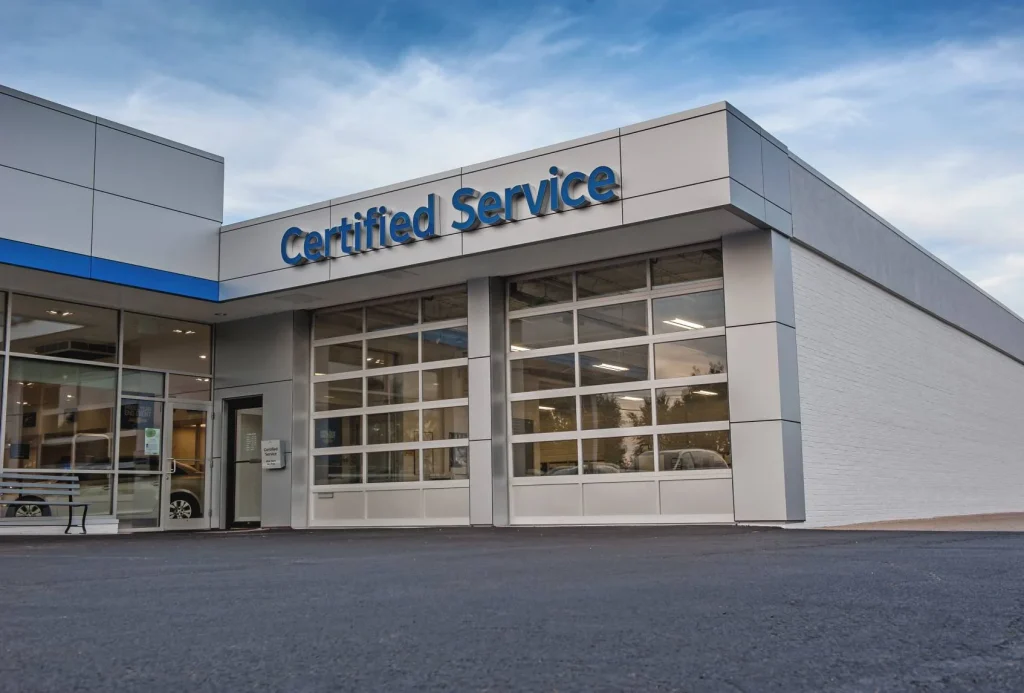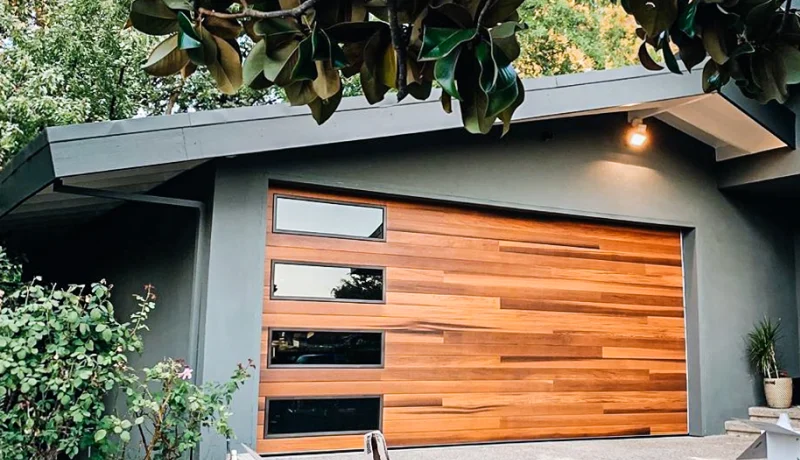Garage Door Prices in Wayne, MI
Affordable Options for Every Budget
Locally Owned & Operated Since 2017
Schedule A Service Request
We Serve Businesses In And Around The Following Cities:
About Garage Door Prices
Understanding Garage Door Prices and Services in Wayne, Michigan
Wayne, Michigan, a bustling suburban city, presents a unique blend of residential tranquility and commercial activity nestled in the Detroit Metropolitan area. Among the essential facets enhancing both home and business protection stands the unassuming yet vital garage door. Despite its commonplace presence, the implications of garage door prices and the nuances of overhead garage door repair and installation service offerings are profoundly significant. Delving into these services can not only secure your property but also offer aesthetic and practical enhancements, making them invaluable investments for any property owner.
At the heart of garage door services in Wayne is McClellan Overhead Door, a company renowned for its expertise in handling diverse garage door requirements. Let's journey through the processes, benefits, and real-world applications of managing garage doors to understand how they influence your home or business environment.
Exploring the Process of Garage Door Installations
Achieving a seamless garage door installation begins with understanding the distinct needs of either a residential or commercial property. The initial phase involves comprehensive consultations, where McClellan Overhead Door takes into account unique architectural characteristics, security requirements, and aesthetic preferences. This tailored approach ensures that whether opting for classic or contemporary garage doors, you receive a solution perfectly suited to your environment.
The selection of a garage door transcends mere aesthetic consideration. Material choices ranging from steel and wood to innovative blends, like composite, play pivotal roles in defining durability, functionality, and garage door prices. After selecting the appropriate door, the installation process commences, meticulously orchestrated by skilled technicians who ensure mechanical parts, sensors, and openers align seamlessly. A crucial step in this part of the operation is adhering to industry standards and safety regulations, guaranteeing long-term functionality and user safety.
Post-installation, a thorough inspection is critical. Here, McClellan Overhead Door’s commitment to excellence shines through. They ensure that all components, from the garage door opener to the tracks and sensors, perform optimally. The comprehensive inspection culminates in a detailed walkthrough with property owners, highlighting key functionalities and maintenance tips to maximize the door’s life and performance.
The Benefits of Timely Garage Door Repairs
Garage doors, being mechanical entities, are subject to wear and tear. Regular maintenance and timely repairs positively influence their longevity and functionality. The convenience of garage door repair services addresses minor glitches before they morph into significant inconveniences, such as accidental lock-ins or break-ins due to malfunctioning components.
Quick repairs managed by experts like McClellan Overhead Door are not only about fixing issues but also involve a comprehensive assessment of garage door safety. Regular updates ensure compliance with safety mechanisms that protect both property and users. For example, maintaining sensors and the door opener ensures optimal functioning and energy efficiency, which are crucial considerations for both home and business environments.
With the rising complexities of modern garage doors, including integration with smart home systems, tapping into professional repair services ensures these technologically advanced systems perform without hitches. By partnering with providers who understand the intricate correlations between components like springs and openers, property owners safeguard against unexpected failures and costly replacements or accidents.
Real-World Applications and Advantages for Businesses
The role of garage doors in commercial settings stretches beyond mere entry and exit. They contribute significantly to operational fluidity and security. Industries relying on efficient logistics, such as manufacturing and distribution, benefit from sturdy, reliable garage doors that facilitate smooth loading and unloading processes.
McClellan Overhead Door has serviced numerous businesses in Wayne by installing custom solutions that cater to specific sector needs. From high-speed roll-up doors in warehouses to insulated sectional doors for temperature-sensitive environments, the applications are varied and strategically vital. Enhanced security features, like reinforced steel doors, also play an integral role in protecting valuable goods and maintaining operational confidentiality.
Furthermore, aesthetic considerations also come into play. An impressive facade can boost a company’s public image. Contemporary garage doors offer aesthetic appeal without compromising on functionality, making them an attractive option for businesses aiming for a modern look while ensuring security.
Residential Considerations and Enhancements
In residential settings, the garage door is often a prominent feature of a home’s facade. The right choice can enhance curb appeal and contribute positively to property values. When considering the price of garage doors, it’s essential to assess long-term benefits like energy efficiency and reduced maintenance costs. For instance, insulated doors contribute to better interior temperature regulation, which can lead to energy savings over time.
Besides aesthetics and energy advantages, safety is a paramount concern. Investing in advanced technology such as smart door openers that allow remote monitoring and operation can vastly improve household security and convenience. By employing McClellan Overhead Door for these installations, homeowners in Wayne can access cutting-edge solutions that offer peace of mind and contemporary sophistication.
Professional Guidance and Informed Decisions
The journey of selecting and maintaining a garage door is made significantly easier with professional guidance. Choosing the correct door type, ensuring proper installation, and committing to regular maintenance prevent future issues and reduce the likelihood of costly replacements. For complex issues and high-grade solutions, McClellan Overhead Door offers expert insights grounded in years of industry experience, helping Wayne residents make informed choices.
Transparency in pricing and services ensures that clients understand the factors influencing garage door prices. This openness builds trust and satisfaction, affirming McClellan Overhead Door as a cornerstone for reliable garage solutions. With options tailored for both residential and commercial needs, every aspect from budget to bespoke requirements is catered for with precision.
Incorporating advanced features into installations future-proofs investments. By keeping abreast of technological advancements, McClellan Overhead Door ensures clients have access to state-of-the-art solutions like automated and remote-controlled systems. This proactive approach aligns with modern living standards and the evolving landscape of security and convenience requirements.
Ultimately, the decision to repair, replace, or install a new garage door involves multiple facets that impact both immediate functionality and long-term investment. By prioritizing customer service and quality workmanship, McClellan Overhead Door remains a premier choice for those navigating the complexities of garage door needs in Wayne. Engaging their services not only simplifies these decisions but also ensures that properties across the city are adorned with secure, stylish, and efficient garage door solutions.
Garage Door Prices Gallery



Call Us Today to receive your Free Quote for Garage Door Prices in Wayne
Serving: Wayne, Michigan

About Wayne, Michigan
The site of Wayne was crossed by the Sauk Trail, and due to this, the area was visited by Potawatomi and French fur traders for years before permanent settlement. The first settler was George M. Johnson, who built a small log cabin on 80 acres of land in 1824 (a state historical marker can now be found at the site). The cabin served as a tavern for travelers along the trail, by then known as the Chicago Road. The area soon became known as Johnson's Tavern. After a few years, the tavern was sold to Stephen G. Simmons, who continued to operate the business until he murdered his wife while in a drunken rage. Simmons was arrested and taken to Detroit, where he was tried and hanged September 24, 1830. He became the last person to be executed in Michigan, as the territory abolished capital punishment shortly thereafter.
In 1832, Ezra Derby bought the tavern and land from the Simmons heirs and began establishing a settlement. Derby built a sawmill, store, mill, blacksmith shop and the first frame dwelling for himself. In 1834, a plat was recorded in Detroit with lots and a town square under the name Derby's Corners. In 1836, the name of the settlement was changed to Wayne, in honor of Revolutionary War General Anthony Wayne. Soon a small hamlet began to develop, which was accelerated by the arrival of the Michigan Central Railroad in 1838. The Chicago Road that ran through Wayne was paved with oak logs in 1850, becoming the Detroit and Saline Plank Road. In 1867 it was changed to its current name of Michigan Avenue. In 1869, Wayne was incorporated as a village with a population of about 800 people. (In 1960 Wayne officially became a city.)
Many major industries have located in the village over the years. The Prouty and Glass Carriage Factory was the first, moving from Detroit in 1888. At the time, this made Wayne the largest carriage and sleigh producer in the country. In 1899, the Detroit interurban railroad (a streetcar system connecting Detroit to outlying towns) reached Wayne and ran until 1929. Ray Harroun, winner of the first Indianapolis 500, built the Harroun motor car in Wayne from 1916 to 1921. The Gotfredson Truck was produced from 1924 to 1927, and The Graham-Paige car company made vehicles in Wayne from 1928 to 1936. Stinson Aircraft was also located at the nearby Detroit Industrial Airport and produced small planes from 1926 to 1948. The Michigan Assembly Plant was built in 1957, and the Gar-Wood company built garbage trucks and hydraulic equipment from 1947 to 1972. Other major companies located in Wayne include Unistrut, which was invented in Wayne, and Wayne Industries.
The population and industrial production around Wayne significantly increased after World War II.
The 1960s saw a period of urban renewal in downtown Wayne, as the city sought to compete with its neighbors. Michigan Avenue had gone from a divided highway to a two-way undivided route between Pershing and 4th Streets, with Main Street to the south serving as an unofficial business route connecting to Michigan Avenue at both ends. As part of the redevelopment of the downtown area, Michigan Avenue received new eastbound lanes, routed one block south of Main Street along Norris Street, with the original undivided route retaining westbound traffic. Wayne Road was subsequently reconstructed to eliminate its original staggered intersection at the now-westbound Michigan Avenue, continuing along the former Washington Street alignment before turning 45 degrees to cross the new eastbound Michigan. Main Street's connections to Michigan Avenue were cut off, with the street now only running from Williams Street to Wayne Road, with a segment incorporated into the parking lot of the Town Square Plaza shopping center. The redevelopment ultimately did not result in the kind of growth the city had hoped for, though; in particular, the undersized Town Square Plaza could not compete with the larger Westland Shopping Center a few miles north.
The city, located on the Lower River Rouge which bisects the city, is bound on the north by Glenwood Road, the west by Hannan Road, the south by Van Born Road, and on the east by Merriman Road.
According to the United States Census Bureau, the city has a total area of 6.02 square miles (15.59 km), all land.
| Census | Pop. | Note | %± |
|---|---|---|---|
| 1860 | 304 | — | |
| 1870 | 833 | 174.0% | |
| 1880 | 919 | 10.3% | |
| 1890 | 1,226 | 33.4% | |
| 1900 | 1,361 | 11.0% | |
| 1910 | 1,263 | −7.2% | |
| 1920 | 1,899 | 50.4% | |
| 1930 | 3,423 | 80.3% | |
| 1940 | 4,223 | 23.4% | |
| 1950 | 9,409 | 122.8% | |
| 1960 | 16,034 | 70.4% | |
| 1970 | 21,054 | 31.3% | |
| 1980 | 21,159 | 0.5% | |
| 1990 | 19,899 | −6.0% | |
| 2000 | 19,051 | −4.3% | |
| 2010 | 17,593 | −7.7% | |
| 2020 | 17,713 | 0.7% | |
| U.S. Decennial Census | |||
As of the census of 2010, there were 17,593 people, 7,055 households, and 4,450 families living in the city. The population density was 2,922.4 inhabitants per square mile (1,128.3/km). There were 7,824 housing units at an average density of 1,299.7 per square mile (501.8/km). The racial makeup of the city was 76.3% White, 17.1% African American, 0.5% Native American, 2.1% Asian, 1.0% from other races, and 3.0% from two or more races. Hispanic or Latino of any race were 3.4% of the population.
There were 7,055 households, of which 32.6% had children under the age of 18 living with them, 38.9% were married couples living together, 18.3% had a female householder with no husband present, 5.9% had a male householder with no wife present, and 36.9% were non-families. 30.9% of all households were made up of individuals, and 10.3% had someone living alone who was 65 years of age or older. The average household size was 2.45 and the average family size was 3.06.
The median age in the city was 38.6 years. 23.5% of residents were under the age of 18; 9% were between the ages of 18 and 24; 26.8% were from 25 to 44; 28.2% were from 45 to 64; and 12.5% were 65 years of age or older. The gender makeup of the city was 48.2% male and 51.8% female.
As of the census of 2000, there were 19,051 people, 7,373 households, and 4,844 families living in the city. The population density was 3,165.2 inhabitants per square mile (1,222.1/km). There were 7,651 housing units at an average density of 1,271.2 per square mile (490.8/km). The racial makeup of the city was 84.36% White, 11.29% African American, 0.61% Native American, 1.44% Asian, 0.04% Pacific Islander, 0.43% from other races, and 1.82% from two or more races. Hispanic or Latino of any race were 1.94% of the population.
There were 7,373 households, out of which 33.0% had children under the age of 18 living with them, 45.2% were married couples living together, 15.7% had a female householder with no husband present, and 34.3% were non-families. 28.5% of all households were made up of individuals, and 9.3% had someone living alone who was 65 years of age or older. The average household size was 2.53 and the average family size was 3.13.
In the city, the population was spread out, with 26.4% under the age of 18, 8.5% from 18 to 24, 31.8% from 25 to 44, 21.6% from 45 to 64, and 11.7% who were 65 years of age or older. The median age was 35 years. For every 100 females, there were 92.6 males. For every 100 females age 18 and over, there were 89.5 males.
The median income for a household in the city was $46,397, and the median income for a family was $56,150. Males had a median income of $42,385 versus $28,069 for females. The per capita income for the city was $21,326. About 7.6% of families and 9.1% of the population were below the poverty line, including 10.9% of those under age 18 and 9.6% of those age 65 or over.
Schools of the Wayne-Westland Community School District located in Wayne include:
- Benjamin Franklin Middle School
- Roosevelt-McGrath Elementary School
- Taft-Galloway Elementary School
- Wayne Memorial High School
- Wayne Westland Community High School
- St. Michael Lutheran School: PK-8th Grade
- St. Mary's Catholic School (permanently closed)
- St. Joseph's Catholic School
All residents are zoned to Adams Upper Elementary School in Westland, Benjamin Franklin Middle School in Wayne, and Wayne Memorial High School in Wayne, as well as Walker-Winter Elementary School in Canton.
